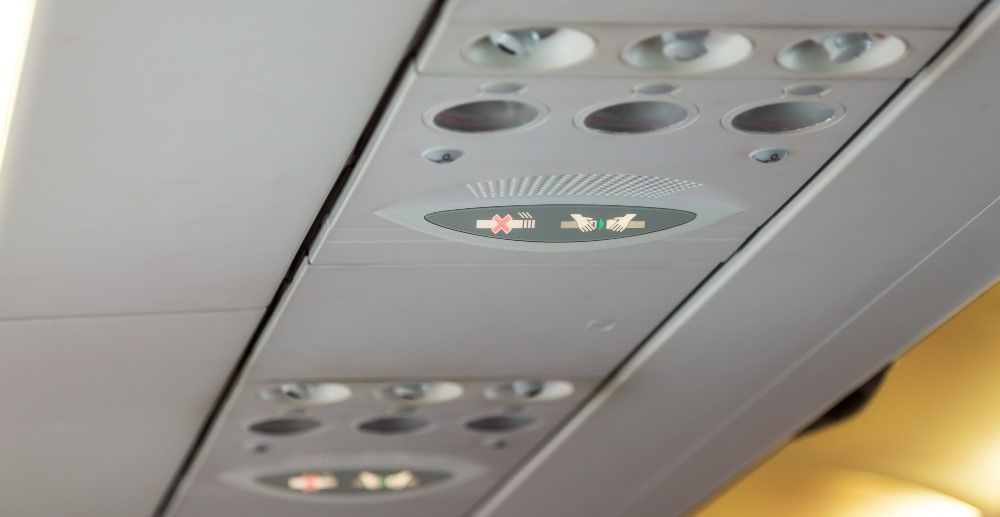Nanomaterial Composites and the Aerospace Industry
How nanomaterial composites are making aircraft lighter, stronger, and safer.

The manufacturing of aircraft is one of the most technologically advanced sectors of the economy. A field where even the pigment content in the paint on a plane can impact its fuel efficiency.
It is therefore no surprise that aircraft manufacturers are fully embracing the advantages of nanomaterials in the composites and raw materials they use.
Here are some of the many ways in which nanomaterial composites are making aircraft lighter, stronger, and safer:
Boron Nitride Nanotubes
Boron nitride nanotubes are ideal for spacecraft and military engine parts, rocket nozzles, and thermal protection systems because of their excellent electrical insulation and thermal durability. These nanomaterials can preserve the structural integrity of spacecraft by protecting them from aerothermal flux during re-entry. Additionally, complex aircraft wing models are also made from modern materials like aluminium reinforced with boron nitride nanotubes.

Carbon Nanotubes
Carbon nanotubes (CNTs) are cylindrical nanostructures known to exhibit exceptional electrical conductivity and strength. For this reason, they are frequently employed to reinforce composite materials in engine parts and aeroplane frames. Their inclusion allows weight reduction without sacrificing structural integrity, thus enhancing the aircraft's overall performance and fuel efficiency.
Other carbon nanomaterials have excellent properties of thermal conductivity, and so are widely used in aircraft for insulation against extremes of hot and cold, even in space. They can protect sensitive electronics and structural components and are also used in de-icing coatings and sprays or fire-resistant materials.
Silver Nanoparticles
Silver nanoparticles (SNPs) are frequently integrated into antimicrobial filters and coatings to “maintain sterile environments within aircraft and spacecraft.” This they achieve due to their potent antimicrobial properties which they impart into composite materials. This helps keep passengers and crew healthy—a vital requirement on expensive space missions.

Silicon Carbide Nanoparticles
Silicon carbide nanoparticles are used in aerospace parts that are subjected to extreme temperatures, such jet engines, but are also used in the manufacture of other aircraft components, such as nozzles, nose caps, brake discs, turbine blades, and turbine bearings.
Titanium Dioxide Nanoparticles
Titanium dioxide nanoparticles are frequently included in photocatalytic and self-cleaning coatings, as well as being utilised in engine and aviation parts—particularly in craft operating in space or at high altitudes. Coatings containing these nanomaterials drastically lower the maintenance requirements for air and space craft by protecting against UV rays and breaking down organic contaminants.
Graphene
The thickness of a sheet of graphene is only one carbon atom, yet this purity allows for high electrical conductivity to protect aircraft from lightning strikes as well as limit static build up in sensitive components such as electronics or parts in contact with fuel. Graphene is also used in protective coatings to prevent rust and environmental degradation. Additionally, graphene-based sensors offer sophisticated capabilities for tracking the structural integrity of aerospace materials, enabling the early identification of stress or damage.

The Future of Nanomaterials in the Aerospace Industry
The aircraft of tomorrow will employ nanotechnology even more than today, with researchers finding new applications and developments in how materials function at the nanoscale.
“Current studies are exploring the integration of nanosensors into aerospace structures to monitor real-time stress, corrosion, or damage, supporting proactive maintenance and flight safety management,” notes a recent report in the journal AzoNano. “Additionally, researchers are investigating ways to enhance the efficiency of aerospace electronics and displays by leveraging nanotechnology, ultimately reducing energy consumption and improving system performance.”

But today, as the price of nanomaterials continues to fall and as the number of applications for nanotechnology continues to grow, manufacturers of more mundane products are also embracing this revolution in raw material design.
Epoxy floorings and coatings, for example, benefit greatly from the incorporation of nanomaterials to achieve superior strength, increased wear resistance, and enhanced adhesion to various surfaces.
Related articles: Raw Material Advantages: Bulk vs Nanoscale or Nanomaterial Research Creates Compostable, Edible Polymer
These nanomaterial composites offer improved chemical and thermal stability, making them ideal for high-traffic areas and industrial settings. Additionally, the use of nanomaterials in epoxy floorings and coatings can contribute to reduced maintenance requirements and extended product lifespan, providing cost-effective and long-lasting solutions for residential, commercial, and industrial applications. They can also protect against the build-up of static electricity, a vital property in areas handling or manufacturing sensitive electrical equipment or flammable and explosive materials.
Furthermore, the application of nanomaterials allows for coatings that exhibit improved colour stability, UV resistance, and scratch resistance. This level of control over the material's properties enables the production of coatings with superior durability and weatherability, making them suitable for outdoor applications as well.
Beyond enhancing the physical and chemical properties of epoxy floorings and coatings, nanomaterials also enable the development of environmentally friendly formulations with reduced volatile organic compounds (VOCs), addressing sustainability concerns while maintaining high performance standards. As a result, nanomaterial composites are driving innovation in industry, offering advanced solutions that improve the quality and longevity of everyday products such as epoxy floorings and coatings.

It is therefore safe to say that nanomaterial composites are not only revolutionizing the aerospace industry by significantly reducing the weight of aircraft, increasing their strength, and enhancing overall safety. But they are actually improving environmental standards, increasing durability, adding unique selling points, and providing cost savings across the manufacturing sector.
This means that while the future of aviation undoubtedly lies in the continuous development and implementation of nanomaterial composites, the same could be said for as the entire global economy.
If you would like to find out more about how nanotechnology can improve manufactured products, such as coatings, rubbers, polymers, and epoxy resins, then visit POLYMER NANO CENTRUM.
Photo credit: Freepik, Jannoon028, aleksandarlittlewolf, SpaceX on Unsplash, Freepik, & Jannoon028

